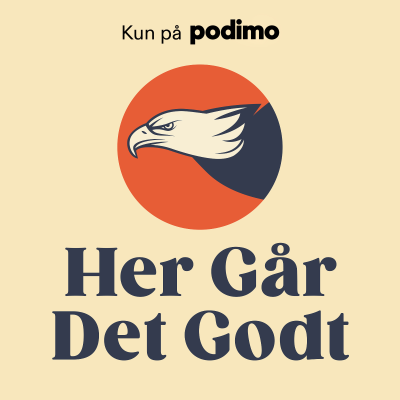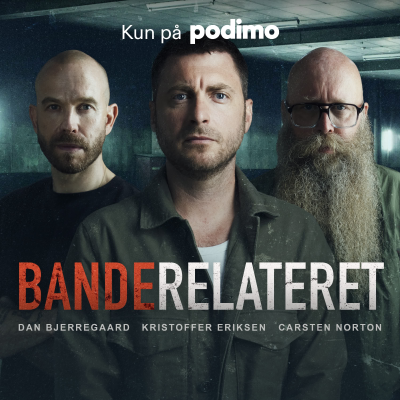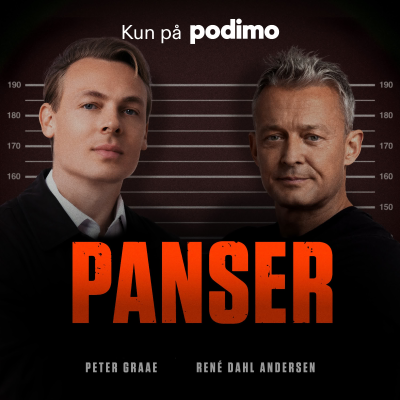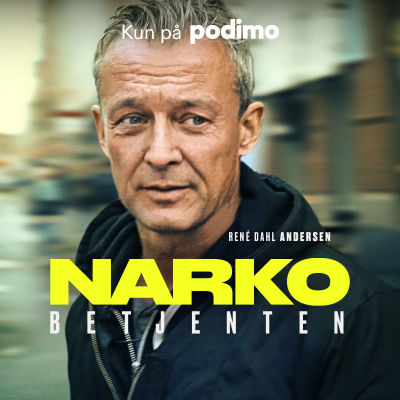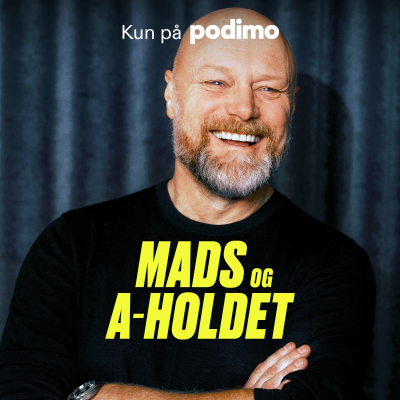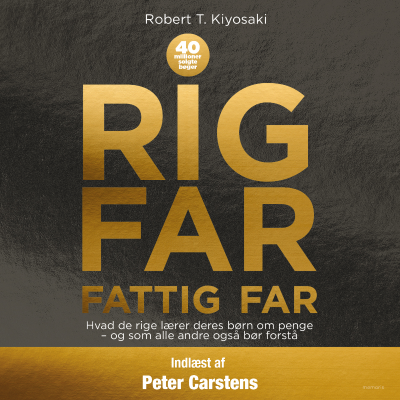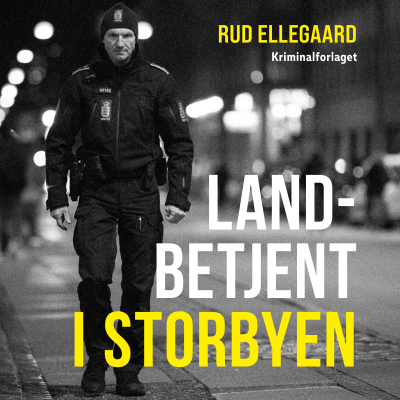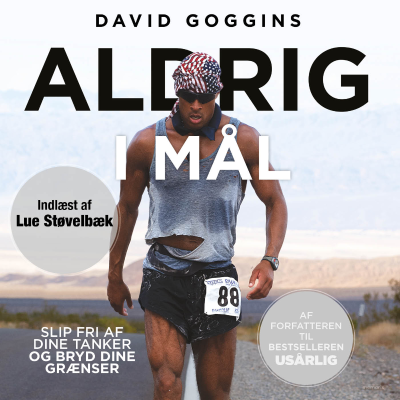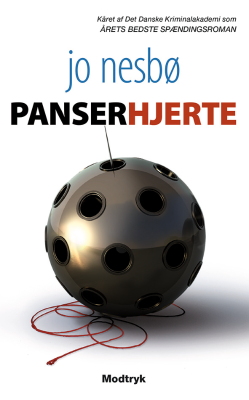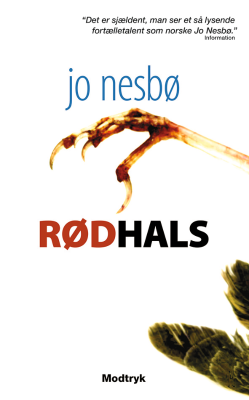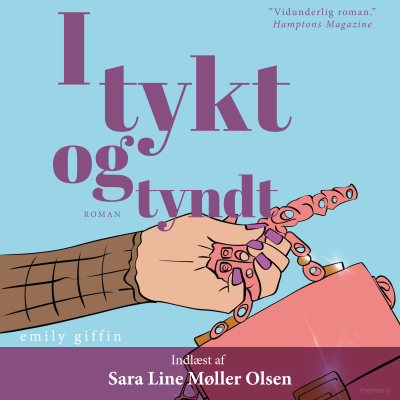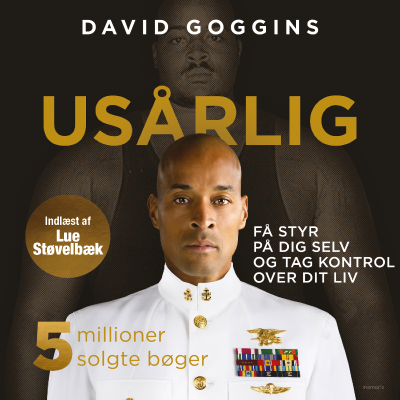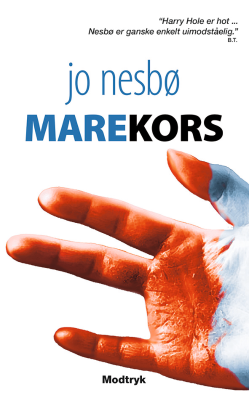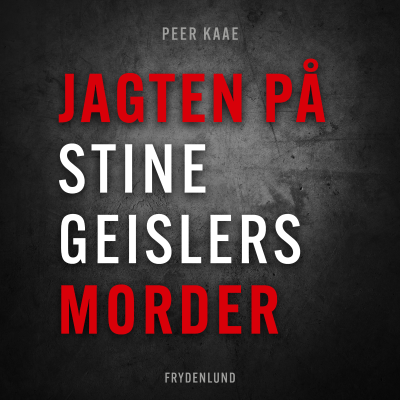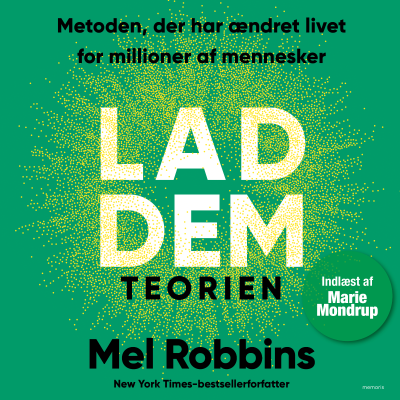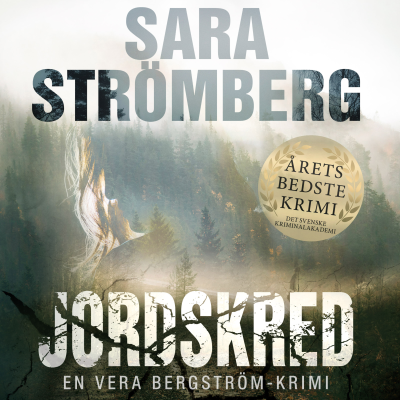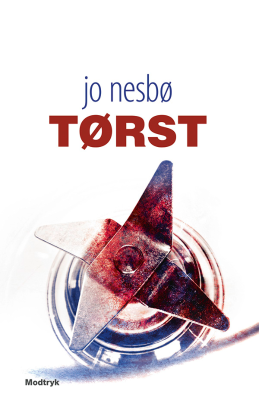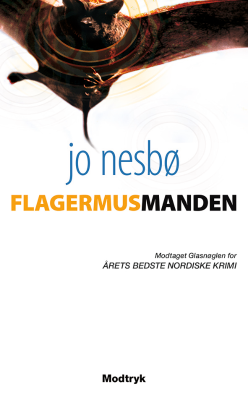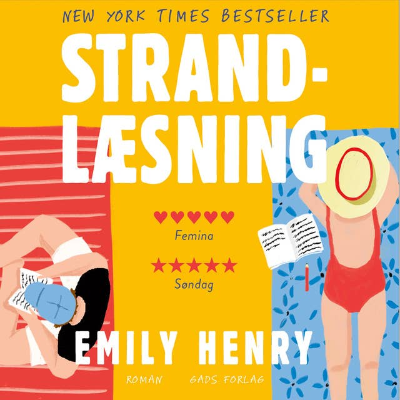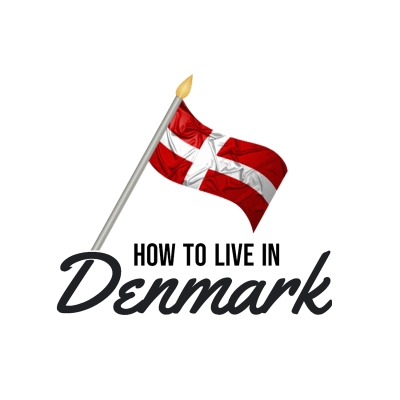
How to Live in Denmark
engelsk
Uddannelse
Begrænset tilbud
1 måned kun 9 kr.
Derefter 99 kr. / månedOpsig når som helst.
- 20 lydbogstimer pr. måned
- Podcasts kun på Podimo
- Gratis podcasts
Læs mere How to Live in Denmark
Quick takes on life in Denmark, in 10 minutes or less. Life as an international in Denmark, one of the world's most homogenous countries, isn't always easy. In Denmark's longest-running English-language podcast, Kay Xander Mellish, an American who has lived in Denmark for more than a decade, offers tips for enjoying your time in "the world's happiest country" plus insights on Danish culture and Danish working culture. Whether you're living in Denmark, thinking about moving to Denmark, or interested in a job in Denmark and want to understand Danish business culture, this podcast will offer insights and guidance. Each episode of How to Live in Denmark is less than 10 minutes long—perfect for your coffee break or commute. Join Kay Xander Mellish as she shares quick, witty, and useful insights on Danish culture and Danish working life in this short-form podcast series. "How to Live in Denmark" tackles topics that will help you understand the Danish way of living, emphasizing work-life balance, the unique Danish workplace culture, and the social norms that define Danish society. With Denmark's renowned flat hierarchy, workplace flexibility, and emphasis on equality, understanding the subtleties of Danish work etiquette is essential for anyone working in Denmark or engaging with Danish businesses. Our discussions also delve into Denmark's flexicurity system, a distinctive approach to labor market regulation that blends flexibility with security, providing insights on how this model supports a dynamic and adaptive work environment. Listeners considering entrepreneurship in Denmark or business ventures in Denmark will find strategic advice on navigating the Danish labor market and leveraging business opportunities in a society known for its innovation and egalitarian corporate culture. (Is Denmark socialist? No, it's more free-market than the US or UK.) Expats in Denmark will particularly benefit from episodes focusing on cultural integration, socializing in Danish workplaces, and the crucial role of professional networking in Denmark. Learn how to navigate Denmark's informal communication styles, engage with the Danish sense of humor in the workplace, and appreciate the significant autonomy given to employees in Danish companies. Kay's short episodes about her experiences in Denmark illuminate the practicalities of living in Denmark and pleasures of Danish life. From understanding Danish employment law to embracing the social trust that is so basic to Danish society, "How to Live in Denmark" equips you with the knowledge to survive and thrive in Denmark. Whether it's deciphering Danish management style, exploring how to maintain work-life balance, or understanding the egalitarian mindset that pervades Danish workplaces, this podcast is your companion in mastering the art of living Danishly. Subscribe to "How to Live in Denmark" start your journey to a deeper understanding of Denmark, ensuring your Danish experience is both successful and enjoyable. Whether you're in Denmark for a new job, a safer home protected by the Danish welfare state, or new business opportunities, let's explore together what it means to live and work in Denmark, raise your family in Denmark, and advance your career in Denmark.
Alle episoder
149 episoderDecember: Little Nisse, Big Money: The Danish Year Part 12
The nisse is a centuries-old figure in Danish folklore, and every December these tiny, mischievous spirits take center stage. While Santa Claus makes one big appearance late in the month, the nisse are active the whole season long. With their short stature and bright red hats, nisse are often mistaken for Santa's elves, but they live very different lives. Rather than helping in a workshop, nisse belong to individual households. They slip in and out of the walls at night, hide everyday objects, turn milk strange colors, and generally make harmless trouble. On December 24 they expect a bowl of rice pudding, and if they don't get it, they're known to act out. In modern Denmark, nisse aren't just folklore—they're also big business. At the housewares shop where I work during the Christmas rush, we stock more than 450 nisse-related products. There are soft dolls, tree ornaments, and hand-painted figurines with names like Asbjørn, Thorkild, Elvin, Liam, and Olivia. And then there are the accessories: tiny doors for the nisse to "enter" the home, miniature doormats, wooden shoes, rocking chairs, honey cakes, buckets, sleds, toolboxes, and of course the classic bowl of rice pudding. Many families—especially those with small children, and a surprising number of older women living alone—create small nisse worlds inside their homes. Some families also hang kravlenisser, the little paper nisse that "crawl" up walls and windows. They're not as popular as they once were, mostly because they're inexpensive and don't fuel the booming nisse economy. Nisse season extends into the workplace, too. Danes might be assigned a nisseven, or "nisse friend," for secret gift-giving at the office. And at holiday parties, even managers may don the pointed red nisse hat—a cheerful symbol of community and self-irony that sometimes surprises international colleagues. From home traditions to office fun, the nisse remain an essential part of Christmas in Denmark: tiny spirits with big personalities, and an even bigger cultural footprint. This is the final episode in our 12-part series, The Danish Year. Read more at howtoliveindenmark.com, or buy our books at books.howtoliveindenmark.com. You can book Kay Xander Mellish, the voice behind the How to Live in Denmark podcast, for a speech or workshop on Danish culture or Danish working culture at events.howtoliveindenmark.com. Learn more about Kay at kxmgroup.dk.
November Rain and "daylighting" buried rivers: The Danish Year Part 11
November always seems like the rainiest of Danish months, but it isn't, actually. October is. But November feels rainier, because the sky is so grey, and it gets dark so early, and the rain sometimes comes down in little freezing pellets. Denmark is a watery country, not just its long coastline and many rivers and lakes, but also the fact it is mostly near sea level. Like the Netherlands nearby, it is extremely vulnerable to flooding. Climate changes in recent decades have made it worse, and sudden cloudbursts – or skybrud– cause a lot of damage. So retrofitting Denmark for even more water in the future has become a national obsession. One popular solution: opening up previously buried rivers and streams, particularly those that were paved over with concrete. This "daylighting" of buried waterways allows them to collect excess water from storms, and beautifies cities as well. This is the most recent episode in our 12-part series, The Danish Year.
October, democracy in denmark, and competitive poster hanging: The Danish Year Part 10
Election posters are a colorful part of democracy in Denmark. In October, the campaigns swing into gear, and when the whistle blows on a set date at precisely noon, teams of poster-hangers cover the country with the faces of their candidates. It's highly competitive; It's against the law to take down posters once they're hung, so there's a big rush to get your party's poster up first. So on that October afternoon, you'll see teams of young people rushing about Copenhagen, Aarhus, and countryside towns with ladders, and hardback posters, and zip ties, and measuring sticks, because all posters must be at least one-and-a-half meters below power lines. There are a lot of young people available to do this because most Danish parties have a youth wing. There are also a lot of young candidates. You'll often see the candidates themselves putting up posters with their own face on them. Danish design in election posters In a country famous for great design, Danish election posters are surprisingly uniform. Every poster features one smiling face, a name, and a party color — and that's it. No slogans, no promises, no policies. What does each candidate stand for? You'll have to look it up yourself. With 13 national political parties (and many more local ones), democracy in Denmark gives voters plenty of choices. Many Danes use online tools and quizzes to find the party that matches their beliefs before they vote. Democracy in Denmark: Expats can vote Foreigners can take part in democracy in Denmark at least at the local level. If you're an EU or UK citizen — or a non-EU citizen who has lived in a Danish municipality for at least four consecutive years — you can vote in local elections just like Danish citizens. In Copenhagen, foreign residents make up around 15% of the potential voter base, though only a small share actually turn out on election day. To reach them, some Danish political parties take part in debates in English, hoping to win over international voters. It's an interesting contrast in Danish politics: while some leaders actively court the foreign vote, others continue to promote stricter immigration policies. That mix is part of what makes democracy in Denmark so unique — open, practical, and sometimes a little contradictory.
September, elite sport, and the not-quite death of Jante Law: The Danish Year Part 9
Denmark may be a small country, but it produces world-class athletes in cycling, tennis, handball, badminton, and golf. How do they do it? And how does the tax-financed effort to create athletic champions fit with the culture code of "Jante Law", the idea is that no one should think themselves better than anyone else? September is when fall sports season starts in Denmark. The badminton league begins, so does volleyball and basketball and hockey. Most importantly, the handball season kicks off, and while I'm not a handball fan myself, I always know when that season is underway because my otherwise mild-mannered downstairs neighbor begins screaming at his flatscreen, cheering on or scolding Denmark's handball girls or handball boys, the teams are equally popular in Denmark. Team handball was invented in Denmark – and like design, it's a national passion. Danish teams have won several World Championships and many Olympic Gold Medals. Football, otherwise known as soccer, is popular too, although given the international competition, it's a bit harder for little Denmark to win championships. The Danish national team did win a European championship in 1992, something any Danish man over 40 will be happy to discuss with you in great detail. Right now there are more than 300,000 registered football players in Denmark if you count amateur, pro, and semi-pro teams. The population of Denmark is 6 million. That means one out of every 20 Danes is on a football team. Danish athletes are not particularly rich, and the ones who do make big money have tapped into markets outside of Denmark. The most famous is badminton player Viktor Axelsen. Since badminton is most popular in Asia, Viktor Axelsen learned fluent Mandarin Chinese. There are lots of endorsements in the Chinese market. The golfing Højgaard twins, Rasmus and Nicolai, make their money on the international golf circuits, in particular the PGA. Both of them also have endorsement deals. And Tour de France winner Jonas Vingegaard makes his money not just in France, but also via international endorsements. Many Danes do sports in their spare time. A bike ride through Copenhagen wouldn't be complete without a middle-aged Lycra lout cyclist who thinks he's Jonas Vingegaard speeding past you in the bike lanes, sometimes screaming "Bagfra!" or "I'm coming up behind you!" Besides criminals and welfare cheats, these are the least liked men in Denmark. And many Danes are involved with what's often described as hygge sports, where the win or the loss isn't as important as the beers with your buddies or pasta with your girls afterwards. These leagues cover the entire lifespan – old boys football clubs or old girls rowing teams can keep you fit long past retirement age – and they often start in childhood. Schools in Denmark have physical education classes – under the old Viking word idraet – but they rarely have school sports teams. Sports are played through clubs, mostly amateur clubs, which is nice for the kids, because if they don't have many friends at school they can make different friends at their sports club. These clubs are part of a huge network connected to Team Denmark, which is a government project to create Denmark's future sports stars. It's always funny to me that there is so much support for elite sport development in a country so keen on Jante Law. Under the Jante Law, the idea is that no one should think themselves better than anyone else. You see this in Danish working culture, and you also see it in the educational system. Smart kids in Denmark don't get a boost – they're expected to just attend ordinary classes and help their slower classmates. There are very few gifted and talented programs, and unlike Germany or the UK, Denmark doesn't academically track children when they're 10 or 11, sending some to more challenging academic programs. In Denmark, you can get away with messing around and doing very little in school until your second year of high school – gymnasium – around age 17 or 18, and then buckle down and end up finding yourself in med school or international business, two of the most sought-after university programs. But, in sport, Denmark begins looking for talent very early. The local sports clubs work with Team Denmark to create a pipeline of talented kids. Team Denmark, which is part of the culture ministry, has been around for forty years, but it constantly updates which sports it supports. Being practical Danes, they aim for sports in which little Denmark has a good chance of big success. Right now, that's badminton, handball, cycling, plus the various sports played on or in the water – sailing, kayaking, swimming, rowing. Denmark has a long tradition of sports that involve boats or water. With all its little islands and fjords, it has more coastline than India. By age 13, these kids are offered places in talent centers or elite sports schools, and when they're 15 and ready for secondary schools, there will be an elite sport track that gives them flexibility to train and compete. Danish universities offer flexibility for the athletes of Team Denmark when it comes to papers and exams. Some companies even offer part-time internships for Denmark's elite athletes, so they can keep their civilian career on track while pursuing their sport. Of course, once they've succeeded at that sport, Jante Law kicks in again. Danish athletes who win things are expected to give credit to their teammates, to their trainers, to the collective effort. To say things like, well, "I was third, I got the bronze, but I could have easily been fourth." They're also expected to stay in Denmark and pay Danish taxes. Viktor Axelsen found himself rather unpopular when he moved to Dubai. His excuse was the better flight connections to badminton matches Asia, as well as the dry weather being good for his asthma, but everyone knew the difference between 56% income tax on top earners in Denmark and 0% in Dubai probably weighed in his decision. The ideal Danish elite athlete is probably Michael Laudrup, who played football at the highest levels throughout Europe in the 1990s, but was always very humble about his skills. After he retired he came back to Denmark, where he now runs a wine business, does some Danish TV commentary, and no doubt pays substantial Danish taxes. This is sporting success in one of the most egalitarian countries in the world. And that's the How to Live in Denmark podcast for this week. You can read all our of episodes of the Danish Year series at howtoliveindenmark.com, or book me, Kay Xander Mellish, for a speech to your group or organization, anywhere in the world. I love to travel; make me an offer. You can also get our books at books.howtoliveindenmark.com. See you next time!
August, The first day of school, and how children learn to be Danish: The Danish Year Part 8
Denmark is a very good place to be a child, and to have children, yet the birthrate is dropping as it is in so many other countries. Some preschools have shut down due to lack of kids. Just this year Denmark reached a population of 6 million – a big landmark - but that's mostly due to immigration, not more children being born. All the initiatives that experts recommend for increasing fertility in other countries already exist in Denmark, like child payments for parents, long parental leaves after childbirth, good universal day care, and tax-funded health care. The Danish government even offers free fertility treatment for the first and second child, and it offers this to single women as well as committed couples. Yet fertility is well below replacement levels, at about 1.5 children per woman in 2024. Why are there not more babies ? My guess is long educational requirements for both men and women – you really can't get anywhere in business without a masters' degree - plus high housing prices in the big cities. Enormous resources on kids I've been spending a lot of time with Danish children lately. I make my living giving speeches about Danish working culture to corporate groups or academics, but in the summer there aren't many of those, so I like to take on other jobs and learn about Danish working culture from the inside. (You can't be an expert on Danish working culture without continually fresh experience of working in Denmark!) This summer I've been working at several preschools that serve ages 3 to 6, a great age to work with. They're old enough to be verbal and express interesting ideas, but not so old that they are flabet, which is the Danish word for sassy, talking back. The Danish government spends enormous resources on kids, in particular preschool kids. A preschool in Copenhagen Denmark One of the preschools where I work, owned by the Copenhagen municipality, is built just for that purpose, with high ceilings and big windows, a seemingly infinite number of toys, five separate playgrounds with trees and sandboxes, a pillow room for jumping around on rainy days, and an extensive kitchen where professional cooks prepare meals. One day this summer we had a very nice baked salmon with rice and broccoli, followed by a snack of fresh strawberries, granola, and yogurt. We adults practice "educational eating" which means we eat lunch with the small children to work on table manners and appropriate table conversation. Read more at howtoliveindenmark.com.
Vælg dit abonnement
Begrænset tilbud
Premium
20 timers lydbøger
Podcasts kun på Podimo
Gratis podcasts
Opsig når som helst
1 måned kun 9 kr.
Derefter 99 kr. / måned
Premium Plus
100 timers lydbøger
Podcasts kun på Podimo
Gratis podcasts
Opsig når som helst
Prøv gratis i 7 dage
Derefter 129 kr. / month
1 måned kun 9 kr. Derefter 99 kr. / måned. Opsig når som helst.





